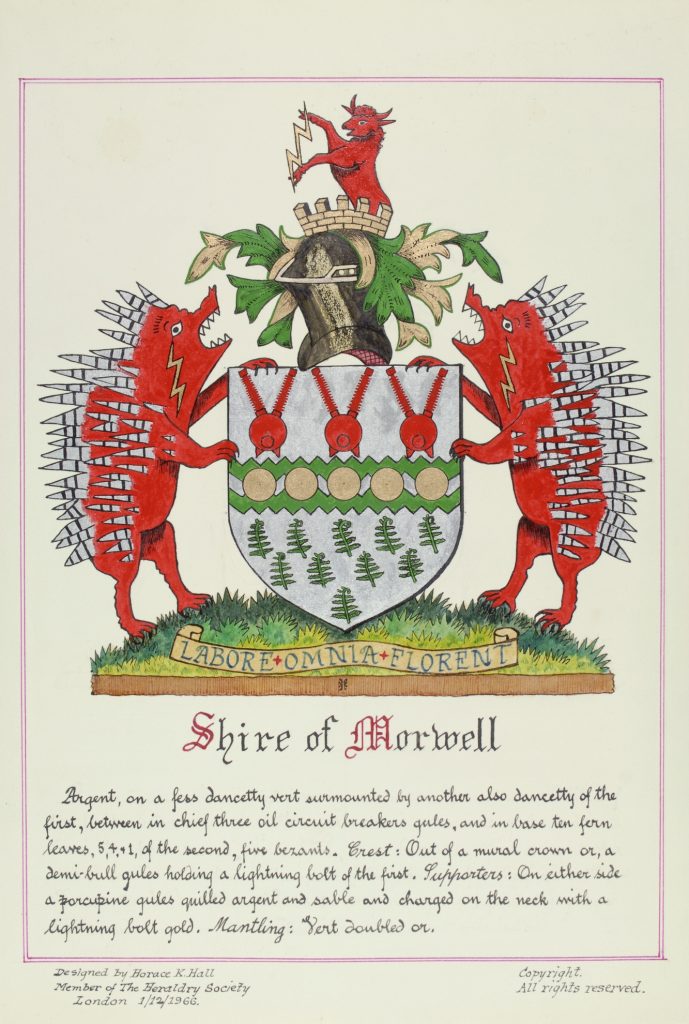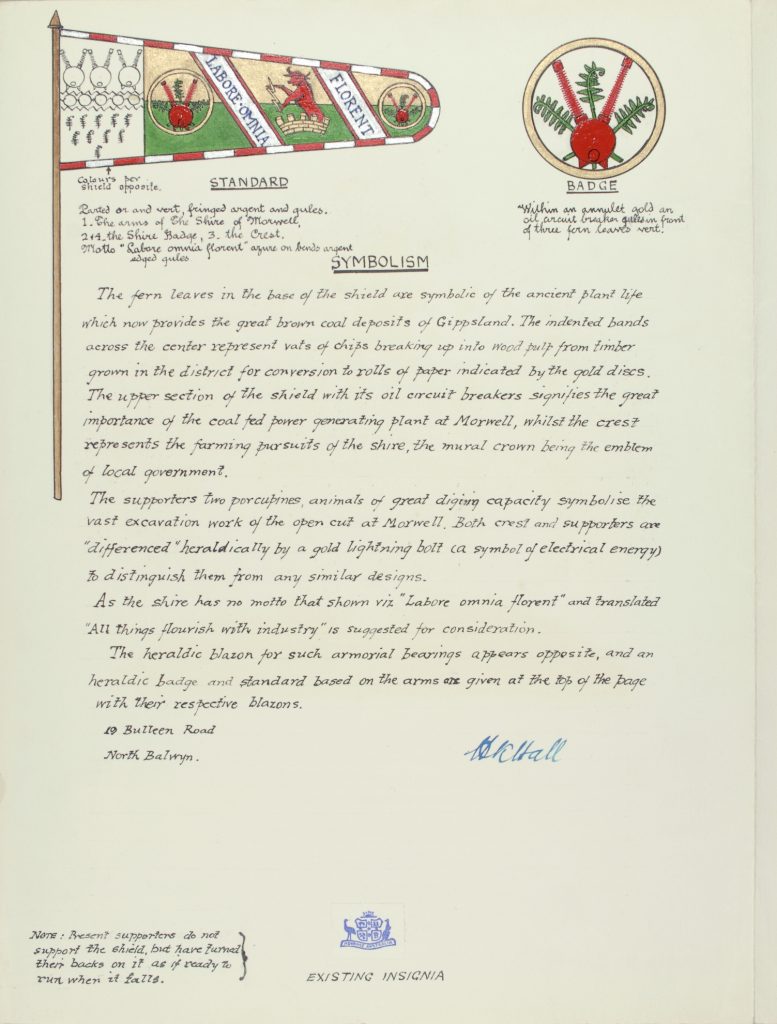Summary
Mr Horace Hall (1898–1984) was a heraldist of superb skill, in both his research and observance of the strict rules of heraldic practice. Perhaps a little surprisingly, his work also betrays imagination and whimsy. Heraldry was his passion; by day he was a banker, commencing his working life in 1918 at the Bank of Australasia (eventually the ANZ Bank) and remaining there until 1978.
His letters patent of arms shows a mastery of his craft. In the case of civic arms, his close study of local history (Indigenous, European, economic and geographic) are allied with his artistic sensibility. The forms described and the colours chosen adhere to the stringent bounds within which all heraldists work. Anyone can design a crest, but for to be legitimate the crest must be approved by the College of Arms in London, by one of the four Heralds of England.
Hall’s use of Australian fauna to support shields is heart-warming. The animals in this selection of his work – the magpie, echidna, lyrebird – were as strange and implausible to the first explorers as any unicorn would be. Horace Hall’s research for and design of new crests for organisations and city councils filled a void in the regalia of public associations and their perceived profiles. The city’s trove of these wonders, revealed here, is but a fraction of the life’s work of this determined and thorough scholar artist.

